Traditional music in Mauritius
Mauritius Island, the cultural melting pot of the Indian Ocean, is at the crossroads of several musical styles. Sega is however the unifying musical genre.
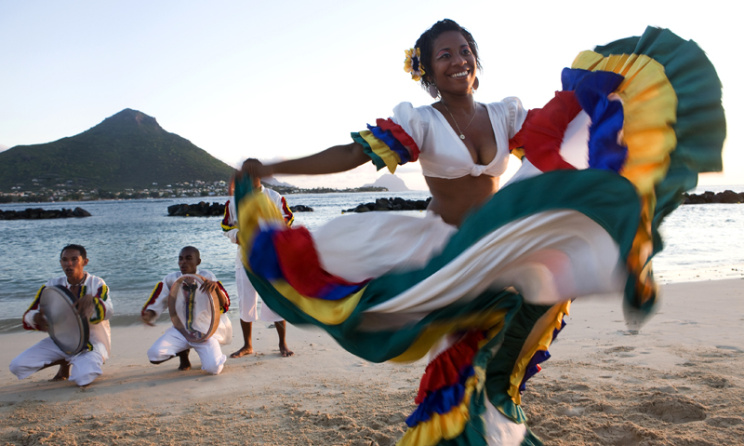 Sega dancer. Photo: locationsmaurice.com
Sega dancer. Photo: locationsmaurice.com
The Sega
There is no festive evening in Mauritius without Sega, which isdeeply rooted in the country’s tradition. From the typical sega of the descendants of slaves to modern commercial sega, this music hasbeen passed down through generations with enjoyment, evolving and inspiring other influences, in particular the seggae, afusion of Sega and reggae.
Sega, the only traditional music of Mauritius, follows a three count and is derived from African influences. Sega stands out as the musical reference of the island.
Traditional Sega is the symbolic performing art of the Creole community. A soloist improvises words, while a drum, a rattle box and a triangle give the tempo and produce the typical rhythm. The dancers move their hips and raise their hands, by making small steps to manoeuvre around each other.
Sega is taught in a formal and informal way through practice and imitation.Sega can be performed by all the members of the community and contributes to unify various groups around a shared Mauritian heritage.
Sega dance
Deeply rooted in the Mauritian culture, Sega dance is passed on like a legacy. Parents and grandparents teach children to dance as soon as they can walk. There is no dancing school to learn the sega; Mauritians have an innate sense of the rhythm.Sega is the music of all the Mauritian people although the Creole community has been practicing it for a long time.
Whether Indian, Muslim, Chinese or Tamil, all the communities of the Mauritian nation dance the sega.
The origins of the Sega dance are somehow unknown. Some believe that the Sega music originates from the culture of the slaves arriving from Africa; yet, it turns out that sega does not exist on the African continent. There is considerable agreement that sega is a fusion of various African and western dances, which allows the communities to gather, in spite of differences in culture, language, and sometimes religion. Sega, as we know it today, is far from the sega at the time.
The original instruments were replaced by more modern ones such as the bass, the electric guitar and the drums. Although Sega music is distinctive to every island, the dance has remained the same.
Bhojpuri Geetgawai
Bhojpuri is the language of the people of the South of India and has evolved into a new form in Mauritius. The Bhojpuri Boys incorporated the Bhojpuri language and oriental melodies to the Mauritian creole language and three count rhythm of the sega. The band received national and international acclaim.
This form of Sega is popular in the gammats ceremonies (eve of an Indian wedding). Bhojpuri songs are popular on the island and include folk songs called Geetgawai, songs associated with rites of passage, songs for the Holi celebration and godna (traditional body tattooing).
But, it is through the Geetgawai that this music will establish itself. The other genres are still cultivated in villages. Bands continue to promote the passion for music and keep the music alive.
Sega and its influences, represent today the bridge between Asia and Africa. A musicality which resounds far from the beaches of the island, constantly evolving. Its history is still young, just like its country.
Music Instruments
The ravanne, the triangle and the maravanne are the three basic instruments of the sega. Other instruments were added, but the trio is the heartbeat of sega music. It is a music which evolved over time while maintaining ‘its melody’, as explained byMarclaine Antoine, a sega singer.
Althoughwide floral skirts were brought into fashion by modern sega and the influence of the hotel sector, sega is all about three instruments which lead the dance and lends the tempo.
The precursors
The precursors allowed this once marginalized music, to be heardand immortalized on 45 rpm. From Ti Frère to Menwar, sega has had an interesting journey at the heart of thecolourful island.
Here are a few of the ambassadors of Sega:
Jean Alphonse Ravaton, known as Ti Frère, was born on 22 April 1900 in Quartier Militaire, in the district of Moka. His father, of Malagasy origin, was also a singer and performed at private parties called “bal bobesse ". Ti Frère grew upsurrounded by “quadrillecréole" (traditional dance from French overseas territories) and “Sega typique” (afro-Mauritian style). He is an illiterate, but capable of improvising a song. In 1925, he sang‘Tamassa’, his first sega song.
The song was recorded on a 45 rpm in 1948 by the Damoo Sound and Music. It is the first 45rpm ever recorded in Mauritius. He was crowned ‘King of Sega’ in 1964. Despite his popularity, Ti Frère lived in dire poverty and died in 1992.
Fanfan is a poet, storyteller and composer. He can be referred as the griot of Mauritius. His songs are about real life experiences. Fanfan is one of the last singers to keep the traditional sega ravanne alive. His songs are accompanied by the ravanne, the maravanne and the triangle.
Menwar, real name Stephano Honoré, is a Mauritian author, composer and singer. The creator of Sagaï, (fusion of Sega acoustics with traditional instruments and other musical genres such as jazz, blues, reggae), tours the world to tell about his life, his country and hisideals. He picked up his guitar and ravanne and now sings a new form of sega, in duet with his son.
Reference: Le Meilleur de l’Île Maurice: www.lemeilleurdelilemaurice.com La maison du Séga Ravanne: www.sega-ravanne.org Le Mauricien newspaper: www.lemauricien.com Unesco Website: www.unesco.org








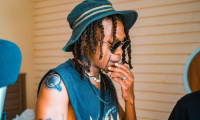

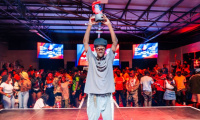
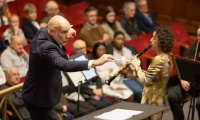



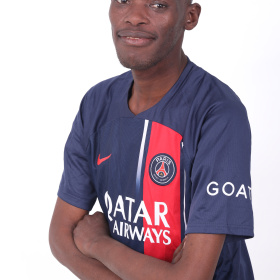

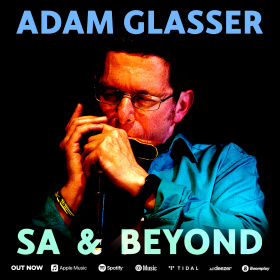
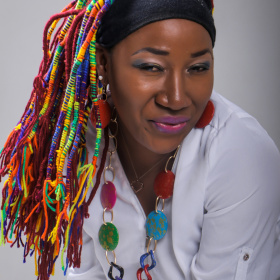


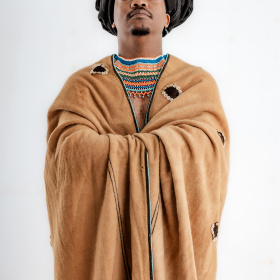
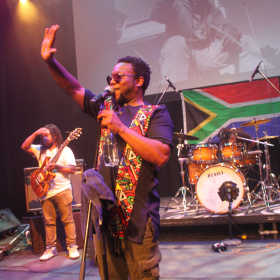
Comments
Log in or register to post comments